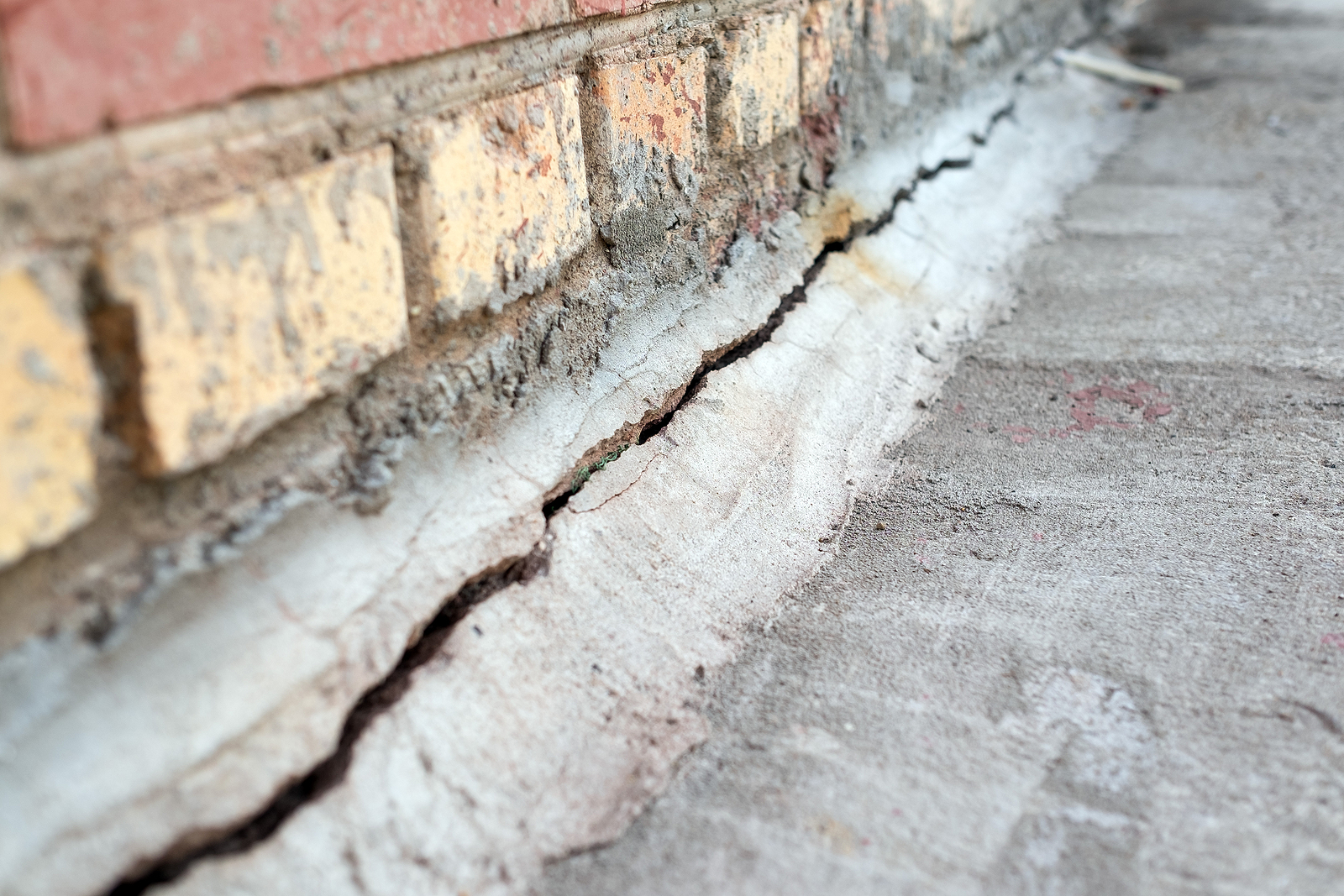Exploring Various Methods of Foundation Repair for Various Soil Kinds
Structure fixing is a vital element of preserving architectural honesty, specifically when taking into consideration the varied obstacles postured by different dirt kinds. The intricacy of dirt habits under differing conditions necessitates a tailored strategy to repair, making certain ideal solutions such as helical piers for unstable soils or chemical grouts for natural layers.
Understanding Dirt Kinds
Soil kinds play a crucial function in the security and longevity of structure structures, making it important for home owners and building and construction professionals to recognize their attributes and actions. The communication between soil and structure can establish the architectural stability of a building. There are a number of dirt types, each with distinct physical buildings that influence exactly how foundations are made and maintained.
Granular dirts, such as sand and gravel, provide great drainage and are usually taken into consideration steady. In contrast, natural soils like clays and silts exhibit various behaviors.
Rocky soils, known for their toughness and security, offer exceptional support for foundations but may need customized tools for excavation. Alternatively, fertile soils, which are a balanced blend of silt, sand, and clay, usually provide positive conditions for foundation support because of their modest water drainage properties.

Comprehending these soil kinds is important for choosing proper structure repair approaches, making sure the sturdiness and security of structures gradually.
Difficulties With Extensive Clay
Among the different soil kinds, expansive clay offers distinct difficulties for structure security because of its propensity to undertake significant quantity adjustments with dampness variant. This sort of soil swells when wet and contracts when completely dry, which can apply significant pressure on structures. These variations can cause structure splitting, heaving, and settlement problems, posing considerable threats to the architectural integrity of buildings.
The obstacles with extensive clay are exacerbated by its plasticity index, which measures the soil's capability to change shape and volume. A high plasticity index shows higher potential for activity, enhancing the probability of damages to foundations. This is particularly troublesome in regions experiencing frequent or extreme weather condition adjustments, where cycles of damp and completely dry conditions prevail.
Furthermore, the deepness of extensive clay layers can differ, making complex the evaluation and planning of suitable structure repair service approaches. These intricacies call for an extensive geotechnical evaluation to ensure efficient structure repair service methods are implemented, stressing the significance of addressing expansive clay obstacles with proficiency and care.
Solutions for Sandy Soils
Sandy soils, defined by their large fragment dimension and low cohesion, existing distinct challenges for foundation security due to their tendency for shifting and disintegration. By anchoring the structure to deeper, a lot more stable dirt layers, these systems can supply the required support to counteract the moving nature of sandy soils.
Another advised method is the application of dirt stabilization techniques. Chemical grouting, for instance, includes injecting a maintaining representative right into the soil, which boosts communication and reduces leaks in the structure. This procedure assists to strengthen the sandy substratum, therefore lessening the risk of erosion and motion.
Furthermore, mounting proper water drainage systems is vital in sandy dirt problems. Making certain appropriate drainage can stop water build-up around the structure, which often worsens erosion and soil variation. Strategies such as French drains or surface area grading can be utilized to direct water away from the building boundary.
Addressing Working Out in Loamy Soils
Loamy soils, understood for their well balanced mix of silt, sand, and clay, use a fertile base for many structures but can sometimes cause foundation settling as a result of their one-of-a-kind make-up. This well balanced texture gives exceptional water drainage click this link and nutrient retention, making it suitable for agriculture and landscaping. This same feature can come to be troublesome for structures, as changes in moisture content can trigger the soil to expand or contract, leading to resolving.
Attending to clearing up in loamy dirts requires a complex method. Precise soil screening is essential to establish the certain composition and dampness web content of the loam. When data is collected, implementing proper water drainage services is important to keep constant dampness levels, thus decreasing the threat of soil contraction or development. French drains pipes or surface grading work approaches to redirect water away from the structure.

Ingenious Repair Service Techniques
In the world of structure fixing, cutting-edge methods are continuously being created to resolve the complex challenges posed by different soil conditions. As soil kinds differ substantially in their structural residential or commercial properties, standard techniques might not constantly are enough. The introduction of new innovations in foundation repair offers more tailored solutions, ensuring stability and longevity.
One significant technology is the usage of helical piers, which are specifically efficient in unstable or large dirts (foundation repair okc). These piers are screwed into the ground until they get to a steady layer of dirt, using solid assistance for the structure over. This technique minimizes interruption and is adaptable to different soil kinds, making it a versatile option
Another cutting-edge method is the application of polyurethane foam injection. This method involves infusing high-density polyurethane foam under the structure to load gaps and maintain the framework. It is a much less invasive alternative to traditional foundation, providing fast installation with minimal disturbance to the surrounding location.
Furthermore, soil stablizing techniques, such as making use of chemical cements, have acquired grip. These compounds boost dirt stamina and reduce leaks in the structure, Get the facts stopping future changing. Jointly, these ingenious fixing strategies give reliable services for the diverse obstacles posed by differing dirt conditions.
Conclusion

Foundation repair service is a crucial element of keeping architectural stability, particularly when taking into consideration the varied difficulties postured by different soil kinds (foundation repair oklahoma city ok). The complexity of soil actions under varying conditions demands a customized approach to fix, making certain optimal solutions such as helical piers for unpredictable dirts or chemical cements for cohesive layers. By securing the foundation to much deeper, much more steady soil layers, these systems can give the essential support to neutralize the moving nature of sandy soils
Structure repair service needs mindful consideration of dirt kinds to ensure security and long life. Chemical grouts boost soil stamina and minimize leaks in the structure in natural dirts.
Comments on “The Ultimate Solutions for Foundation Repair Oklahoma City: Professional Insights”